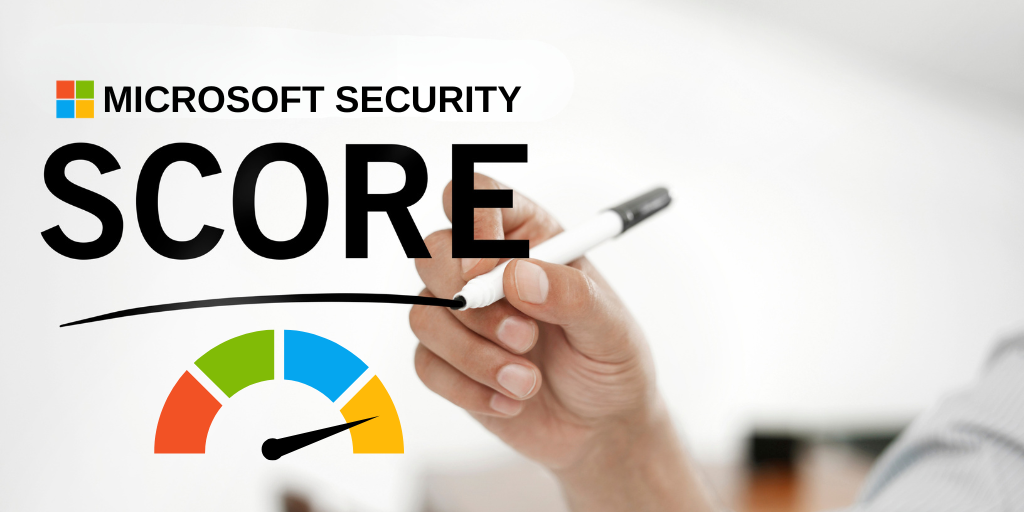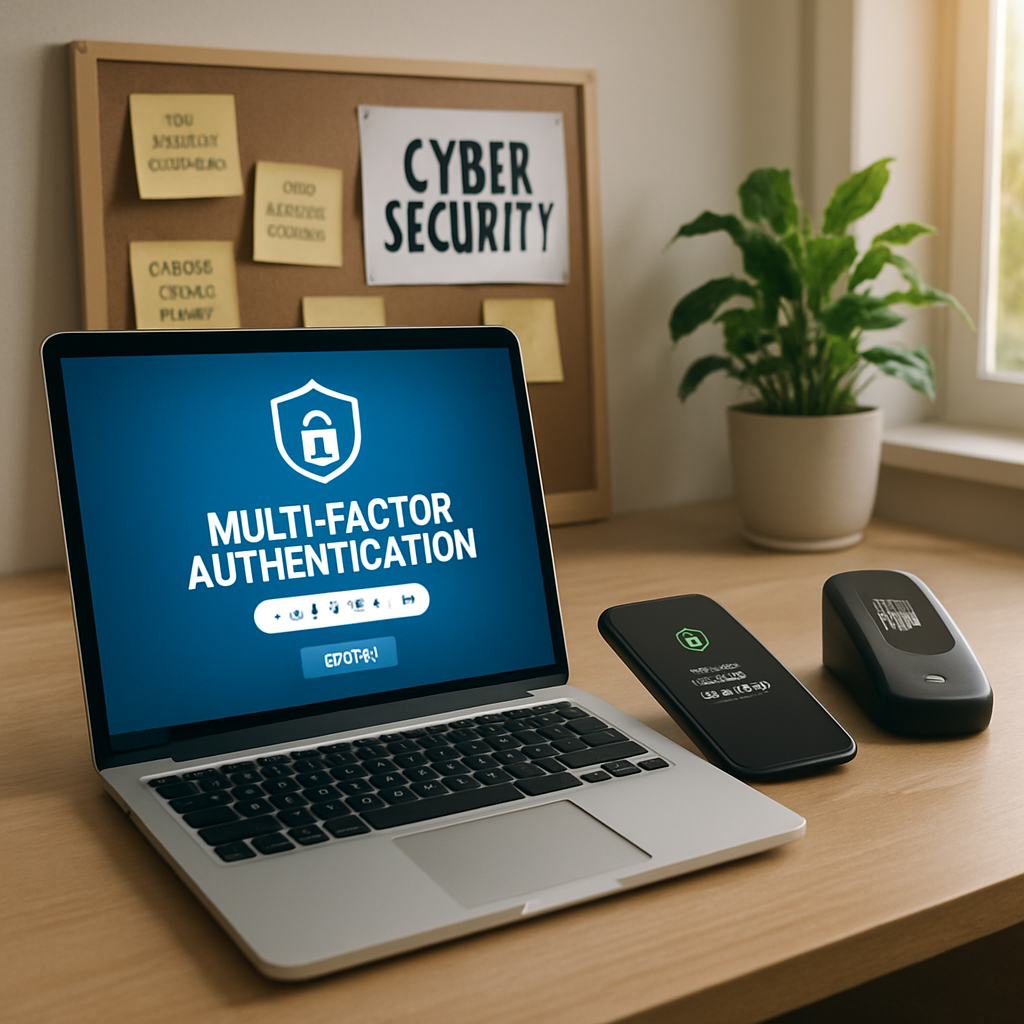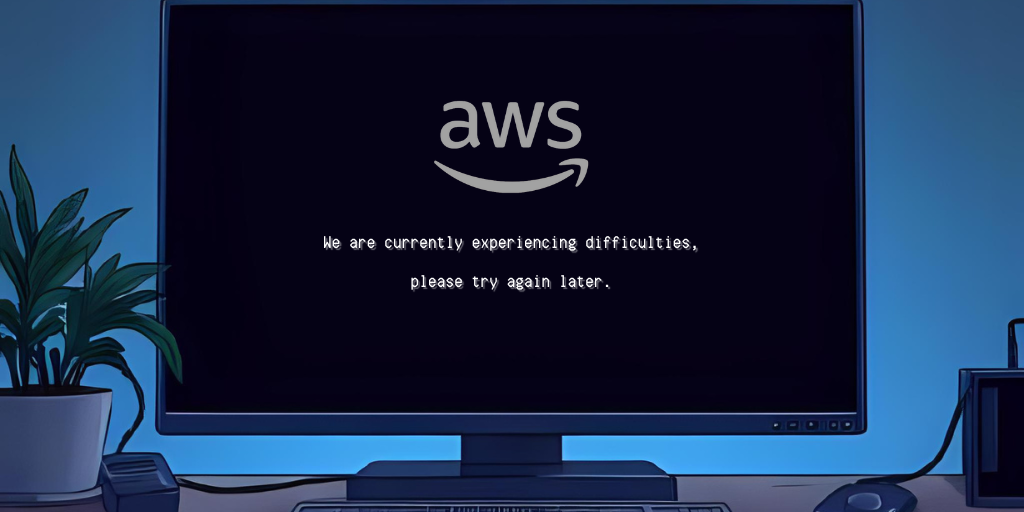Why Small Businesses Need Multi-Factor Authentication
Small businesses face growing cyber threats, making multi-factor authentication a critical defense to safeguard sensitive data and ensure business...
3 min read
.jpeg) Michael Markulec
:
Aug 27, 2025 9:03:33 AM
Michael Markulec
:
Aug 27, 2025 9:03:33 AM

Discover how the Microsoft Security Score can be a game-changer for enhancing your small business's cybersecurity posture.
The Microsoft Security Score, also known as Secure Score, is a comprehensive measurement of an organization’s security posture within the Microsoft 365 ecosystem. It provides a quantifiable, real-time assessment of your current security standing based on the adoption of recommended security controls and best practices established by Microsoft. This score is calculated from an in-depth analysis of your organization's active security configurations, policy implementations, user behaviors, and the presence of key protective technologies within your Microsoft 365 environment.
Unlike a simple checklist, the Secure Score is dynamic and continuously updates as your security settings and user activities change. This allows it to reflect not only the controls you have already deployed but also areas where your organization may be exposed to unnecessary risk. The Secure Score offers specific, actionable recommendations tailored to your current setup, guiding you step-by-step to address vulnerabilities, adopt stronger controls, and align with industry best practices.
For small businesses, the Secure Score functions as both an early warning system and a strategic roadmap to improved security. By following targeted recommendations—such as enabling multi-factor authentication, improving device management, and tightening access permissions—businesses can incrementally raise their score. Each improvement directly translates into enhanced resilience against a broad spectrum of cyber threats, helping organizations safeguard their data, maintain compliance, and build trust with stakeholders.
For small businesses, maintaining robust cybersecurity measures is crucial in today’s rapidly evolving threat landscape. Even a single breach has the potential to trigger considerable financial losses, irreparable damage to your brand’s reputation, and prolonged operational downtime that can be devastating for smaller organizations with limited resources. The Microsoft Security Score serves as an invaluable, proactive tool uniquely suited for small businesses: it provides immediate visibility into your security strengths and deficiencies, empowering you to identify and remediate vulnerabilities before they become exploitable entry points for cybercriminals.
Leveraging the Security Score not only helps small businesses prioritize investments in the most impactful security controls, but it also supports regulatory compliance efforts—an increasingly important concern given the rise of data privacy regulations worldwide. Moreover, as awareness of digital risks grows, clients and partners are placing greater emphasis on the security posture of the businesses they interact with. Maintaining a high Security Score signals to stakeholders that your organization is serious about data protection, adopting industry best practices, and taking active steps to safeguard sensitive information. This commitment can be a critical differentiator in competitive markets, especially for businesses that handle confidential client data, process transactions, or operate in sectors subject to strict compliance standards.
Accessing your Microsoft Security Score is straightforward and user-friendly, ensuring that even organizations with limited IT resources can easily engage with the platform. Start by logging into your Microsoft 365 Admin Center—this is the central hub for managing your Microsoft cloud environment. Once logged in, navigate to the Microsoft Secure Score dashboard, which provides immediate visibility into your current security posture. Here, you’ll find not only your up-to-date score but also a transparent breakdown of how each element contributes to your overall rating, including factors such as authentication practices, device compliance, data protection controls, and user activities.
The dashboard offers actionable insights in the form of recommended actions, each clearly annotated with its potential impact on your security score and broader risk profile. These recommendations are thoughtfully categorized, making it easy to identify which actions are high priority and which provide incremental improvements. Some measures may be quick wins—such as enabling multi-factor authentication or tightening access permissions—while others might require more substantial changes, like implementing advanced data loss prevention policies or reconfiguring device management protocols.
To fully capitalize on the benefits of the Secure Score, organizations should make it a routine practice to review these recommendations and track their implementation progress within the dashboard. Regularly monitoring and acting on these insights ensures not only that your score improves over time but also that your security framework evolves in step with changing threats and industry standards. This ongoing vigilance is essential for maintaining a resilient security posture and meeting regulatory obligations in a dynamic cyber risk environment.
Improving your Microsoft Security Score involves adopting and consistently maintaining a range of recommended security controls designed to protect your digital environment. Begin by addressing fundamental best practices: enable multi-factor authentication (MFA) for all users across your organization to significantly reduce the risk of unauthorized access, regularly audit and update user access permissions to limit exposure to sensitive data, and enforce strong password policies to defend against credential-based attacks. These baseline actions immediately strengthen your security posture and provide the foundation for ongoing improvement.
Once the essentials are in place, elevate your defenses by implementing more sophisticated safeguards tailored to your business needs. Activate data loss prevention (DLP) policies to monitor and control the movement of sensitive information—helping to prevent accidental leaks and maintain compliance with data privacy regulations. Deploy Microsoft Defender for Office 365 to establish advanced protection against evolving threats such as phishing, business email compromise, and malware-laden attachments. Additionally, invest in ongoing security awareness training for your team, ensuring that every staff member recognizes and reports suspicious activity, subsequently reducing your organization’s vulnerability to social engineering tactics.
Beyond these steps, optimize device management to ensure all endpoints are compliant with established security protocols, utilize encryption for data at rest and in transit, and leverage Microsoft 365’s built-in reporting tools to track your progress and identify new opportunities for risk reduction. Each improvement you implement is reflected in your Secure Score, providing real-time feedback on your organization’s resilience and helping create a culture of cybersecurity vigilance that enhances both operational efficiency and stakeholder trust.

Small businesses face growing cyber threats, making multi-factor authentication a critical defense to safeguard sensitive data and ensure business...

Discover how CMMC 2.0 is reshaping cybersecurity compliance for small manufacturers in the defense sector and what steps your business must take to...

Discover the wide-ranging implications of the latest AWS outage and how it is reshaping operational strategies for businesses of all sizes.